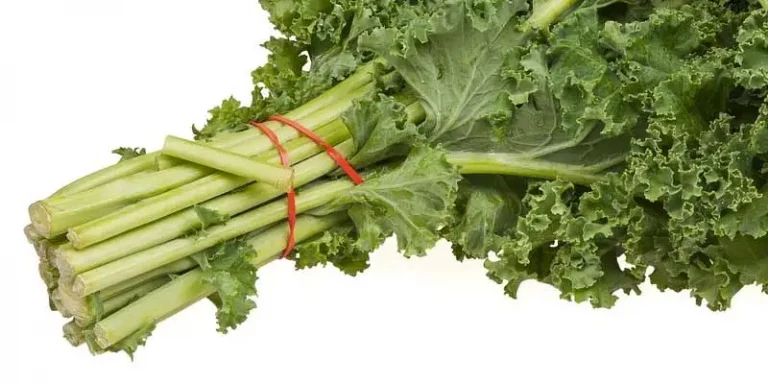Kale is one of the most nutritious leafy greens that you can eat. It’s rich in vitamins A and C and has more calcium than milk. The leaves are also high in fiber, so they’re great for digestion. But did you know that you can eat kale stems?
You may have seen recipes for kale stem chips or sautéed kale stems on Pinterest or Instagram, but did you know that there’s more to these leafy greens than just their leaves?
Kale stems are edible, too. They’re slightly tougher than the leaves but still taste good when prepared properly. Even though they don’t look as pretty as the leaves, they’re still worth trying out in your cooking!
Are Kale Stems Safe To Eat?
Kale stems are safe to eat if you cut them off of the leaves. They are fibrous and tough and can be bitter when eaten raw. You can use them in soups, broths, and stocks or roast them with other vegetables. Kale stems are also edible when cooked, although they are not widely used in culinary applications.
If you prefer not to cook your kale stems, you can use them for making infusions or herbal teas.
Benefits Of Eating Kale Stems
Kale stems are a delicious and nutritious addition to your diet. These edible stems are often thrown away because people think they’re just for decoration or for holding up the leaves of the plant.
In fact, kale stems are very tasty and can be used in a variety of recipes. They’re high in fiber and they’re also rich in vitamin A, C, K, and B6.
Here are some other benefits of eating kale stems:
1) They’re crunchy: If you like crunchy foods, then you’ll love kale stems because they’re full of fiber and other nutrients that make them incredibly filling — so much so that you won’t even realize that you’re eating vegetables!
2) They contain more vitamins than other types of greens: While kale leaves are known for being one of the healthiest foods around, kale stems contain even more vitamins than their leaf counterparts do — including vitamin C (which helps boost immunity), vitamin K (which promotes bone health) and vitamin A (which protects against various diseases)
3) Kale stems are high in antioxidants: This will protect your body from free radicals and help prevent diseases such as cancer and heart disease.
4) Kale stems contain sulforaphane: This is a powerful antioxidant that helps fight off infection and disease. This compound also works to detoxify your liver by removing harmful toxins from your body.
What Do Kale Stems Taste Like?
Kale stems have a milder flavor than their leafy counterparts, which makes them perfect for adding to soups or stews. You can also sauté them with other vegetables or add them to your favorite salad recipe.
What Can You Do With Kale Stems?
If you love kale, you’ve probably wondered what to do with the stems. (After all, they are a little tough.) Well, wonder no more! We’re here to tell you that there are actually lots of ways to use them up — including in your juice or smoothie.
Kale stems have a slightly different flavor than the leaves, but they’re not bad at all. In fact, if you haven’t tried them yet, we recommend giving them a shot.
Here are some ideas for incorporating kale stems into your diet:
Juicing – If you have a juicer, try adding a few kales stems to your juice recipe for added texture and nutrition! You can also juice them separately and use them as an ingredient in another recipe (see below).
Smoothies – Kale stems go great in smoothies! Just be sure not to add too many — otherwise, they may overpower your drink with bitterness. You can also add other greens like spinach or chard to help balance out their flavor and texture.
Baked Goods – Kale stems also make an appearance in baked goods like bread and crackers — especially those made with whole grains.
Conclusion
Kale stems are a great addition to your diet! They can be eaten raw or cooked and have a mild, sweet taste. Kale stems are typically discarded because they are not as tender as the leafy greens. But they’re actually quite nutritious and easy to prepare.

